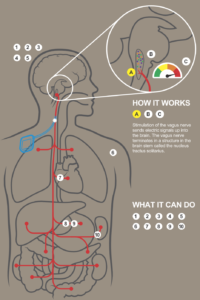Association of heart rate variability and inflammatory response in patients with cardiovascular diseases: current strengths and limitations
Kristen Sparrow • June 25, 2016

 A detailed article documenting the intricacies of different aspects of HRV and the inflammatory response, particularly in regard to Coronary Artery Disease. I found this part of the conclusion particularly interesting, where they suggest that nonlinear measures may be more indicative. Incorporating nonlinear measures has been a recent enhancement of my own analysis.
A detailed article documenting the intricacies of different aspects of HRV and the inflammatory response, particularly in regard to Coronary Artery Disease. I found this part of the conclusion particularly interesting, where they suggest that nonlinear measures may be more indicative. Incorporating nonlinear measures has been a recent enhancement of my own analysis.
“Furthermore, sympathetic outflow can either induce or inhibit inflammatory activity, whereas HF component might fail to reflect vagal inputs upon different organs, such as the spleen, which are major cytokine producers. In addition, the explanatory power of HRV analysis is affected by circadian variability as well as by the estimation of inflammatory activity through biomarkers’ measurements from a single blood sample (Haensel et al., 2008). Finally, lack of signals’ stationarity (stable statistical properties) during measurements and the strong association between HRV data and inflammation that has been demonstrated among the most severely ill patients could reflect a non-linear relationship between ANS and inflammatory response. Thus, it has been suggested that newer methods derived from chaos theory should be implemented to assess ANS output, such as fractal and detrended fluctuation analysis (DFA) of heart rate signals (Goldberger, 1996). In addition, standardization of experimental protocols and methods used for the estimation of HRV is urgently needed, in order to allow comparisons among different studies.”

